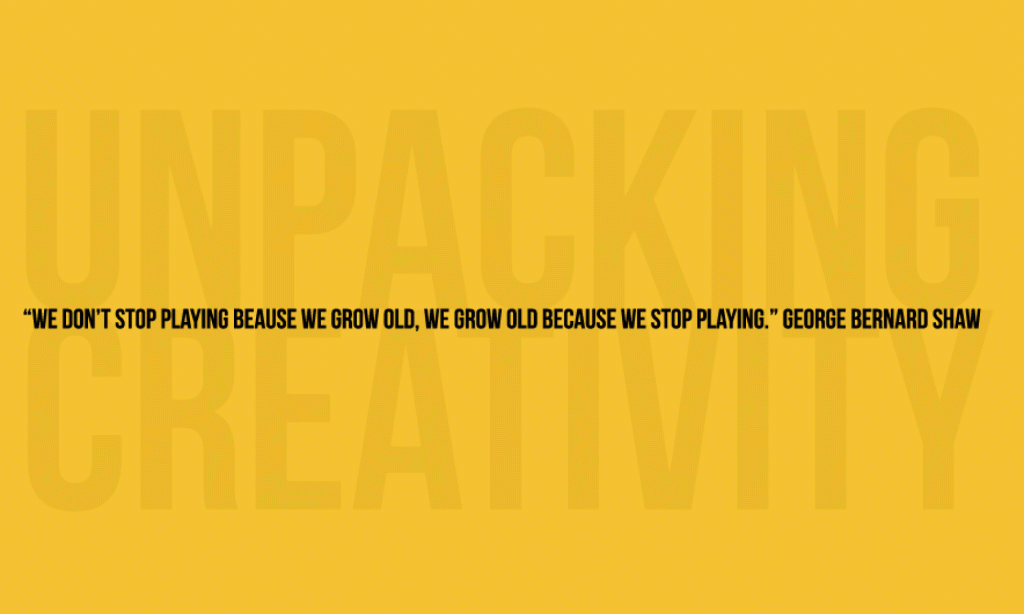
“Creativity can solve almost any problem. The creative act, the defeat of habit by originality, overcomes everything.” George Lois, American Art director, designer and author.
The author proposes a series of games to put in practice your creativity.
Types of Games
Games are divided into categories:
- Convergent. Requires you to combine elements of more than one idea or thing. It’s like putting a puzzle together. You have many pieces and you need to figure out how they can work together.
- Divergent. Taking things apart so you can look at their individual parts. The challenge of breaking dow something into smaller parts to tackle each phase of the process.
- Lateral. Logical thinking process that must follow steps in order. When you solve math you are using lateral thinking.
- Aesthetic. To focus on how an object or idea looks. It is when you look closely at how each part of something appears, or by imagining what would happen if things looked different.
- Emergent. Daydream. Idleness. This way of thinking is when you are idle, walking, sleeping,, daydreaming. Usually these lead to AHA moments.
Specific Games- some samples
Convergent. People Watch. Challenge- Go to a public place, like a shopping center, a library and quickly write a short story for some different people you see walking about. Combine different traits and actions of your “characters” into one compelling story. Research done by NYU have determined that you’re more inclined to think creatively when you imagine yourself removed from a problem or situation. The act of people watching is one way to do it.
Divergent. List 100 Alternative uses. Challenge. Come up with a list of at least 100 alternative uses for a book. A doorstop, a hat, an umbrella. This allows you to think of the object in an entirely new light, simply because you’ll have to strain your brain to come up with a number of original ideas.
Lateral. Think Big to Small. Challenge. Pick something in your life that is simple on its face. Make a list of everything that makes that thing what it is. List all the smaller parts, then the smaller parts that make up those smaller parts. See how microscopic you can get with the details. There are an infinite number of things that influence and impact any larger thing right down to atoms and smaller molecules.
Aesthetic. Draw your face upside down. Challenge. Find a mirror and something to draw with then spend 10 minutes drawing a detailed portrait of your face upside down. Note the areas of struggle to draw most and why the change in perspective makes them so difficult to draw. Viewing familiar things from a new perspective (like being upside down) is an effective way to help you notice all the details you usually take for granted.
Emergent. Stretch out. Challenge. Take 5 minutes to really stretch out. You can do this by standing up or sitting down – simply move your body to loosen your muscles and connecting fibers. Then spend another 10 minutes sitting and relaxing while the benefits of al that stretching start to take shape.
The author says that by completing each activity you will have a better foundation for seeing the world with a more creative light.
Christensen, T. (2015). The Creativity Challenge. Simon and Schuster.
